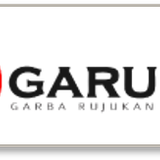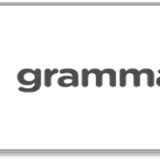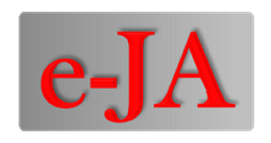The Characteristics Of Users Derivative Company Towards The Company’s Value
DOI:
https://doi.org/10.24912/ja.v23i1.460Abstract
References
Aaj, j., Satriawan, H. B., dan Agustina, L. (2016). Determinan Harga Saham Dengan Nilai Perusahaan Sebagai Variabel Intervening. Accounting Analysis Journal, 5(2), 113-121.
Arnold, M. M., Rathgeber, A. W., dan Stockl, S. (2014). Determinants of corporate hedging: A (statistical) meta-analysis. The Quarterly Review of Economics and Finance, 54(4), 443-458.
Bartram, S. M., Brown, P., How, J. C., dan Verhoeven, P. (2012). Agency Conflicts and Corporate Payout Policies: A Global Study. https://papers.ssrn.com/sol3/papers.cfm?abstract_id=1068281.
Bolek, M. (2014). Return On Current Assets, Working Capital And Required Rate of equity. e-Finance, 10(2), 1-10.
Boumosleh, A. S., dan Raad, E. (2012). Market Reaction to Capital Expenditures of Powerful CEOs. International Journal of Financial Services Management, 5(4), 356-368. DOI: 2012.048850.
Cassidy, N., Doherty, E., Dan Gill, T. (2012). Forecasting Business Investment using the Capital expenditure survey.
Du, J., dan Girma, S. (2012). Firm Size, Source of Finance, and Growth - Evidence from China. International Journal of The Economics of Business, 19(3), 397-419.
García-Feijoo, L., Kaprielyan, M., Madura, J., & Viale, A. M. (2015). Target valuation complexity and takeover premiums. International Journal of Banking, Accounting and Finance 6(2), 151. DOI: 2015.077033.
Guan, J. X., Li, O. Z., and Ma, J. (2018). Managerial ability and the shareholder tax sensitivity of dividends. Journal of Financial and Quantitative Analysis, 53(01), 335-364.
Herrera, L., dan Sanchez Gonzalez, G. (2013). Firm size and innovation policy. International. Small Business Journal, 31(2), 137-155. DOI :0266242611405553.
Hoffmann, P. S. (2014). Internal corporate governance mechanisms as drivers of firm value: panel data evidence for Chilean firms. Review of Managerial Science, 8(4), 575-604 .
Kartini, K., dan Hasridha, R. A. (2014). Kebijakan Hedging dengan Derivatif Valuta Asing pada Perusahaan Go Public di Indonesia Periode 2009-2012.
Lau, C. K. (2016). How corporate derivatives use impact firm performance. Pacific-basin Finance Journal, Vol. 40, 102-114.
Litt, B. A. (2013). Why Do Firms Invest in Capital Expenditures? Evidence from Environmental Activities. International journal of business and social science, 4(8), 51.
McCown, J. R., and Shaw, R. (2017). Investment Potential and Risk Hedging Characteristics of Platinum Group Metals. The Quarterly Review of Economics and Finance, 63, 328-337.
Mihai-Yiannaki, S. (2013). To hedge or not to hedge during the financial crisis: a case study. Global Business and Economics Review, 15, 210-232. DOI: 2013.053070.
Nandita, A. (2018). Pengaruh Profitabilitas, Leverage, Size, dan Kebijakan Dividen Terhadap Nilai Perusahaan.
Nurqinanty, P. (2018). Pengaruh Struktur Modal, Profitabilitas, Dan Ukuran Perusahaan Terhadap Nilai Perusahaan.
Pascual, J. L. (2013). The Investment in Hedge Funds as an Alternative Investment. https: //intechopen.com/books/engineering-management/the-investment-in-hedge-funds-as-an-alternative-investment.
Putro, S. H., dan Chabachib, M. (2012). Analisis Faktor Yang Mempengaruhi Penggunaan Instrumen Derivatif Sebagai Pengambilan Keputusan Hedging (Studi Kasus Pada Perusahaan Automotive and Allied Products Yang Terdaftar Di BEI Periode 2006-2010). http://eprints.undip.ac.id/35891.
Servaes, H., dan Tamayo, A. (2013). The Impact of Corporate Social Responsibility on Firm Value: The Role of Customer Awareness. Management Science, 59(5), 1045-1061.
Setiawan, D., dan Kartika, A. (2013). Pengaruh Insider Ownership, Struktur Modal, Kebijakan Hutang dan Dividen Terhadap Nilai Perusahaan. Students' Journal of Accounting and Banking, 2(1).
Setiawan, T. (2017). Pengaruh Kebijakan Deviden terhadap Laba Satu Tahun ke Depan. http://trijurnal.lemlit.trisakti.ac.id/index.php/mraai/article/view/1641.
Sprcic, D. M., dan Sevic, Z. (2012). Determinants of corporate hedging decision: Evidence from Croatian and Slovenian companies. Research in International Business and Finance, 26(1), 1-25.
Tai, V. W., Lai, Y.-H., an Lin, L. (2014). Local institutional shareholders and corporate hedging policies. The North American Journal of Economics and Finance, 28, 287-312.
Watson, R. N. (2013). Financial Leverage and Corporate Governance. http://oxfordhandbooks.com/view/10.1093/oxfordhb/9780199642007.001.0001/oxfordhb-9780199642007-e-12
William, A. P. (2015). Price Book Value & Tobin's Q: Measurement Which One is Better for Corporate Governance? European Journal of Business and Management, 7(27), 74-79.
Zeng, T. (2014). Derivative financial instruments, tax aggressiveness, and firm market value. Journal of Financial Economic Policy, 6(4), 376-390.
Downloads
Published
How to Cite
Issue
Section
License
Copyright (c) 2019 Jurnal Akuntansi

This work is licensed under a Creative Commons Attribution-NonCommercial-ShareAlike 4.0 International License.
This journal provides immediate open access to its content on the principle that making research freely available to the public supports a greater global exchange of knowledge.

This work is licensed under a Creative Commons Attribution-NonCommercial-ShareAlike 4.0 International License



















